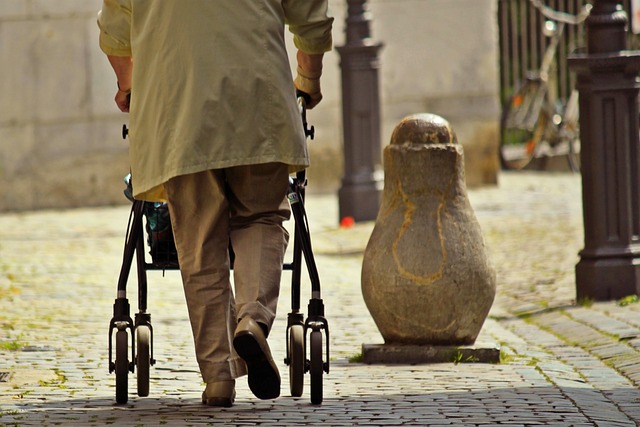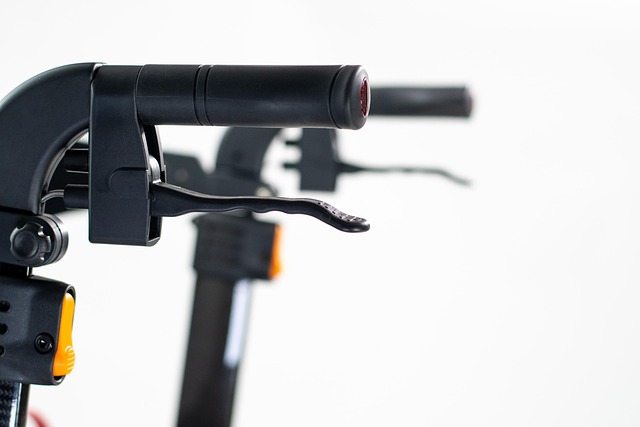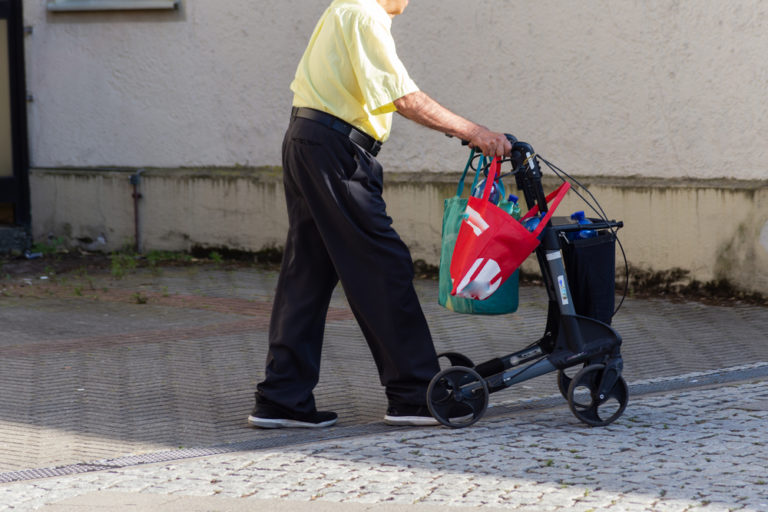What is a Rollator Used for? How to Choose the Perfect Rollator for Your Needs

What is a rollator used for? A rollator is a type of mobility aid that can improve the quality of life for those with mobility issues. If you or a loved one experience difficulty walking, a rollator can provide additional support and stability, allowing you to move around more easily and safely.
Rollators are designed to be used both indoors and outdoors, and they come in a variety of types and styles to suit different needs. They typically have four wheels, a seat, and hand brakes, allowing the user to sit and rest when needed and to control their movement while walking. Rollators are ideal for those who need more support than a traditional walker can provide, but who still want to maintain their independence and mobility.
Whether you have a chronic condition that affects your mobility or are recovering from an injury or surgery, a rollator can be a valuable tool in helping you maintain your independence and improve your quality of life. By providing additional support and stability, a rollator can help you stay active and engaged in your daily life, allowing you to continue doing the things you love.
Understanding Rollators: What is a rollator used for?
If you’re looking for a mobility aid that can improve your life, a rollator is a great option to consider. A rollator is a type of mobility device that is designed to help people move more easily and gain more independence. It is a wheeled walking frame that has wheels at the bottom, making it easier to move around.
Rollators are ideal for people who need assistance with balance and stability while walking. They are also great for those who need to rest frequently while on-the-go. Most rollators come with a fixed or fold-up seat on which you can sit, which makes them ideal for those who fatigue easily.
Rollators are different from walkers in that they have wheels, making them easier to move around. Walkers are designed to provide stability and support, but they don’t have wheels, which can make them difficult to move around. Rollators are also different from wheelchairs because they allow you to walk and move around independently, while still providing support and stability.
There are several different types of rollators available, each with its own set of features and benefits. Some rollators come with four wheels, while others come with three. Some rollators are designed for indoor use, while others are designed for outdoor use. Some rollators are lightweight and easy to fold up, making them easy to transport and store.
Overall, rollators are a great option for anyone who needs assistance with balance and stability while walking. They are easy to use, provide support and stability, and can help you gain more independence and mobility. If you’re considering a rollator, be sure to choose one that meets your specific needs and requirements.
Types of Rollators
Rollators come in different types that cater to specific needs. Here are the three most common types of rollators:
Three-Wheel Rollators
Three-wheel rollators are designed for individuals who require more maneuverability and agility. These rollators have a triangular frame and three wheels, which makes them easier to navigate in tight spaces. They are also lighter and more compact than four-wheel rollators, making them ideal for travel. Three-wheel rollators are suitable for individuals who have good balance and do not need to rely on a rollator for support.
Four-Wheel Rollators
Four-wheel rollators are the most common type of rollator. They have a rectangular frame and four wheels, which provide more stability and support. Four-wheel rollators come with features such as padded seats, backrests, storage baskets, and hand brakes. They are suitable for individuals who need more support and stability while walking.
Bariatric Rollators
Bariatric rollators are designed for individuals who weigh more than 300 pounds. They have a wider frame, larger wheels, and a higher weight capacity than standard rollators. Bariatric rollators provide more stability and support for heavier individuals, making them suitable for outdoor use and rough terrain.
In summary, three-wheel rollators are ideal for individuals who require more maneuverability and agility, four-wheel rollators provide more stability and support, and bariatric rollators are designed for heavier individuals who need more stability and support. Choose the type of rollator that best suits your needs and lifestyle.
Key Features of Rollators
When it comes to choosing a rollator, there are several key features that you should consider. These features can help you determine which rollator is the best fit for your needs. Here are some of the most important features to look for:
Seats and Back Support
One of the most significant advantages of a rollator is that it provides a comfortable seat and back support for when you need to rest. Rollators typically have a fixed or fold-up seat on which you can sit, making them ideal for those who fatigue easily and need to rest while on the go. Some rollators even have padded seats and backrests for added comfort.
Handlebars and Brakes
Rollators have handlebars that provide added support and stability while walking. Unlike walkers, rollators have wheels on all of the legs, which means they have handle brakes. This allows you to control the speed and stop the rollator when needed. Rollators also have height-adjustable handlebars, which can be customized to your height for maximum comfort and support.
Wheels and Terrain Compatibility
Rollators come with either three or four wheels, and the type of wheel you choose depends on your needs. Three-wheel rollators are ideal for indoor use, while four-wheel rollators are more stable and better suited for outdoor use. Rollators also have different wheel diameters, with larger wheels providing better stability and maneuverability on rough terrain.
Storage and Accessories
Most rollators have storage options, providing users with convenient resting spots and space to carry personal belongings. This can include a basket, pouch, or even a tray. Some rollators also come with additional accessories, such as cup holders, cane holders, or even an umbrella holder.
Rollators are also often foldable or folding, which makes them easy to store and transport. When choosing a rollator, it’s important to consider the weight of the rollator as well as how easy it is to fold and unfold.
Overall, the key features of a rollator are designed to provide you with added comfort, support, and independence while walking. By considering these features, you can choose a rollator that meets your needs and helps you maintain your mobility and independence.
Benefits of Using a Rollator
If you have difficulty walking or standing up or have balance issues, a rollator can provide you with the support you need to move around safely and comfortably. Here are some benefits of using a rollator:
- Stability and Support: Rollators are designed to provide you with stability and support as you walk. They have four wheels, which make them more stable than traditional walkers. The wheels also make it easier to maneuver the rollator over different surfaces.
- Comfortable and Safe: Rollators are designed with your comfort and safety in mind. They have padded seats and backrests, which provide a comfortable place to sit when you need to take a break. They also have hand brakes, which allow you to control the speed of the rollator and stop it safely.
- Improved Mobility: Rollators can help you to move around more easily and with less effort. They can help you to maintain your balance and prevent falls. They can also help you to walk for longer distances, which can improve your overall mobility and independence.
- Increased Independence: Rollators can help you to maintain your independence by allowing you to move around more easily without the need for assistance from others. They can help you to perform daily activities such as shopping, running errands, and socializing with friends and family.
- Easy to Use: Rollators are easy to use and require minimal instruction. They are lightweight and foldable, which makes them easy to store and transport. They also require less energy to use than traditional walkers, which can be beneficial for people with limited strength or endurance.
Rollators can provide you with the support and stability you need to move around safely and comfortably. They can help you to maintain your independence and improve your overall mobility. If you are considering using a rollator, talk to your healthcare provider to determine if it is the right choice for you.
Rollators Vs Traditional Walkers
When it comes to mobility aids, walkers have been the standard for many years. However, rollators have become increasingly popular in recent years due to their added features and benefits. Here are some key differences between rollators and traditional walkers:
Types of Walkers
Traditional walkers come in various types, including standard walkers, two-wheeled walkers, and four-wheeled walkers. Standard walkers are the most basic type and consist of a frame with four legs and no wheels. Two-wheeled walkers have two wheels on the front legs, making them easier to maneuver. Four-wheeled walkers have four wheels and are the most advanced type of walker.
Rollators
Rollators, on the other hand, are a type of four-wheeled walker that come with additional features such as a seat, backrest, and storage basket. They are more all-terrain than traditional walkers, making them ideal for those who enjoy spending time outdoors or have a more active lifestyle. Rollators are designed to enhance balance and walking speed while being used and are perfect for use over long distances.
Difference
The main difference between rollators and traditional walkers is the number of wheels. Rollators have four wheels, while walkers typically have two or four. Rollators also have a seat and a crossbar for back support, allowing the user to stop and rest when needed. Rollators also have accessories that can be purchased, such as baskets to hold a shopping bag.
In contrast, traditional walkers do not have a seat or backrest, and users must stop and find a chair or bench to rest. They are also less stable than rollators and require more upper body strength to maneuver. However, traditional walkers are generally less expensive and more lightweight than rollators.
Overall, the choice between a rollator and a traditional walker depends on the individual’s needs and preferences. Rollators are ideal for those who need more support, balance, and comfort while walking, while traditional walkers are suitable for those who need a basic mobility aid at an affordable price.
Choosing the Right Rollator
When choosing a rollator, it is important to consider your specific needs and the environments in which you will be using it. Here are some important factors to consider when selecting the right rollator for you.
Considerations for Indoor Use
If you will be primarily using your rollator indoors, you may want to consider a model that is more compact and maneuverable. A narrower width can be helpful for navigating through tight spaces, such as doorways and hallways. Additionally, a rollator with smaller wheels may be easier to maneuver in smaller spaces.
Considerations for Outdoor Use
If you plan to use your rollator outdoors, you may want to consider a model with larger wheels that can better handle uneven terrain and different types of surfaces. Some rollators are designed specifically for outdoor use and may have features such as all-terrain wheels or a wider base for added stability.
When choosing a rollator for outdoor use, it is also important to consider the weight of the rollator. While a lightweight rollator may be easier to maneuver, it may not be as stable on uneven terrain. A heavier rollator may provide more stability but may be more difficult to move around.
Another factor to consider when choosing a rollator for outdoor use is adjustability. A rollator with adjustable height can be helpful for navigating different types of terrain. Additionally, a rollator with adjustable handles can be more comfortable to use, as it can be customized to your specific needs.
Overall, when choosing a rollator, it is important to consider your specific needs and the environments in which you will be using it. By considering factors such as width, wheel size, weight, and adjustability, you can find a rollator that is comfortable and safe for your needs.
Safety and Maintenance
When using a rollator, safety should be your top priority. Here are some important safety tips to keep in mind:
- Always use the rollator on flat, even surfaces to prevent falls.
- Check the brakes regularly to ensure they are functioning properly. If you notice any issues, such as the brakes not holding or the rollator rolling too quickly, have it serviced immediately.
- When sitting on the built-in seat, make sure the rollator is locked in place to prevent it from moving.
- Do not overload the rollator with too much weight, as this can cause it to tip over.
- Always wear appropriate footwear with good traction to prevent slipping.
In addition to safety, proper maintenance is also important to ensure your rollator lasts as long as possible. Here are some maintenance tips:
- Clean the rollator regularly with a damp cloth to remove any dirt or debris that may have accumulated.
- Check the tires regularly to ensure they are properly inflated. Over-inflated or under-inflated tires can affect the rollator’s stability and make it more difficult to maneuver.
- Lubricate the moving parts of the rollator, such as the wheels and brakes, to keep them functioning smoothly.
- Store the rollator in a dry, cool place to prevent rust and other damage.
By following these safety and maintenance tips, you can ensure that your rollator remains in good condition and helps you stay mobile and independent for years to come.
Insurance and Costs
If you need a rollator to help you with mobility, you may be wondering about the cost and whether or not insurance will cover it. Here’s what you need to know:
Insurance Coverage
If you have Medicare, you may be covered for a rollator. Medicare Part B covers walkers, including rollators, as durable medical equipment (DME) if it is medically necessary and prescribed by a doctor or other treating provider. You will need to pay 20% of the cost after you meet the Part B deductible.
If you have private health insurance, you should check with your insurance provider to see if they cover rollators. Some insurance plans may cover part or all of the cost, while others may not cover them at all.
Costs
The cost of a rollator can vary depending on the type and features it has. Basic rollators without a seat can cost around $50 to $100, while more advanced models with seats, brakes, and other features can cost several hundred dollars.
If you have Medicare, you can expect to pay around 20% of the cost of the rollator after you meet the Part B deductible. However, if you have a Medicare Advantage plan, the cost may be different, so it’s important to check with your plan.
If you don’t have insurance and are paying out of pocket, you can find rollators for sale at medical supply stores, online retailers, and other places. You may be able to find used rollators for a lower cost, but be sure to inspect them carefully and make sure they are in good condition before purchasing.
Overall, if you need a rollator for mobility, it’s important to check with your insurance provider to see if it’s covered and what your out-of-pocket costs will be. You can also shop around to find the best price for the type of rollator you need.
Medical Considerations
If you are considering using a rollator, there are several medical considerations to keep in mind. Rollators can be helpful for a variety of conditions, including care after surgery, injury, pain management, COPD, and for seniors who require assistance with mobility.
Rollators for Seniors
Rollators can be an excellent mobility aid for seniors. They provide stability while walking, which can help prevent falls. Additionally, many rollators come with a built-in seat, which can be helpful for seniors who tire easily or need to rest frequently. Rollators also typically have a basket or storage area, which can be used to carry personal items or groceries.
When selecting a rollator for a senior, it is important to consider the height and weight of the individual. Rollators come in different sizes, and it is important to choose one that is the right height for the user. Additionally, rollators have weight limits, so it is important to choose one that can support the weight of the user and any items they may be carrying.
Rollators for Patients with COPD
Rollators can also be helpful for patients with COPD. Studies have shown that using a rollator can improve oxygen saturation levels and reduce shortness of breath in patients with COPD. When selecting a rollator for a patient with COPD, it is important to choose one with a seat and backrest, as this can provide a place for the patient to rest and catch their breath.
Rollators for Post-Surgery Care
Rollators can also be helpful for patients who are recovering from surgery. Using a rollator can provide support and stability while walking, which can be helpful for patients who are experiencing pain or weakness. Additionally, rollators with a built-in seat can provide a place for patients to rest and recover during their rehabilitation.
When selecting a rollator for post-surgery care, it is important to choose one that is the right height for the patient and has a weight capacity that can support the patient’s weight. It is also important to choose a rollator with a comfortable seat and backrest, as the patient may need to rest frequently during their recovery.
Overall, rollators can be a helpful mobility aid for a variety of medical conditions. When selecting a rollator, it is important to consider the individual’s specific needs and choose a rollator that is the right size and weight capacity. Additionally, it is important to use the rollator correctly and follow any instructions from your healthcare provider to ensure safety and effectiveness.
Conclusion
Rollators are a popular mobility aid that can help seniors and people with disabilities move more easily and gain more independence. They are similar to walkers but have wheels at the bottom, allowing for smoother movement across various surfaces. Rollators come in different types, including three-wheeled, four-wheeled, and heavy-duty models. They also offer various benefits, such as a seat and backrest for resting, storage compartments for carrying personal items, and hand brakes for safety.
When choosing a rollator, it’s essential to consider your specific needs and preferences. Factors to consider include the type of wheels, the weight capacity, the size, and the adjustability. You should also consider the features that are most important to you, such as a padded seat, a basket, or a cup holder.
Using a rollator can have various clinical and physiological effects, such as reducing exertional dyspnea during exercise and physical activity in individuals with chronic obstructive pulmonary disease (COPD). A systematic review of gait parameters in older adults found that walking with a rollator improved gait speed, stride length, and cadence compared to walking without a rollator.
In summary, a rollator is a mobility aid that can improve the life of seniors and people with disabilities by allowing them to move more easily and gain more independence. When choosing a rollator, it’s essential to consider your specific needs and preferences to find the right model for you.
Frequently Asked Questions
What are the benefits of using a rollator?
Rollators offer a range of benefits, including increased stability and support when walking, a built-in seat for resting, and a convenient storage compartment for carrying personal belongings. They can also help reduce the risk of falls and improve overall mobility and independence.
How does a rollator differ from a standard walker?
While both rollators and walkers are mobility aids designed to provide support and stability when walking, they differ in several ways. Rollators have wheels, making them easier to maneuver, and often come with a built-in seat and storage compartment. Walkers, on the other hand, are typically lighter and more compact, making them easier to transport.
What should I consider when choosing a rollator?
When choosing a rollator, it’s important to consider factors such as the weight capacity, wheel size, and overall size and weight of the device. You should also consider whether you need any additional features, such as a built-in seat or storage compartment, and whether the rollator is suitable for indoor and outdoor use.
Are rollators suitable for people with balance problems?
Yes, rollators can be a great option for people with balance problems. The added stability and support provided by a rollator can help reduce the risk of falls and improve overall mobility and independence.
What are the weight limits for rollators?
Weight limits for rollators can vary depending on the specific model and manufacturer. It’s important to check the weight capacity of any rollator you are considering to ensure it can safely support your weight.
Can a rollator be used indoors and outdoors?
Yes, rollators can be used both indoors and outdoors. However, it’s important to consider factors such as wheel size and maneuverability when using a rollator in different environments. Some rollators may be better suited for indoor use, while others may be designed specifically for outdoor use.



